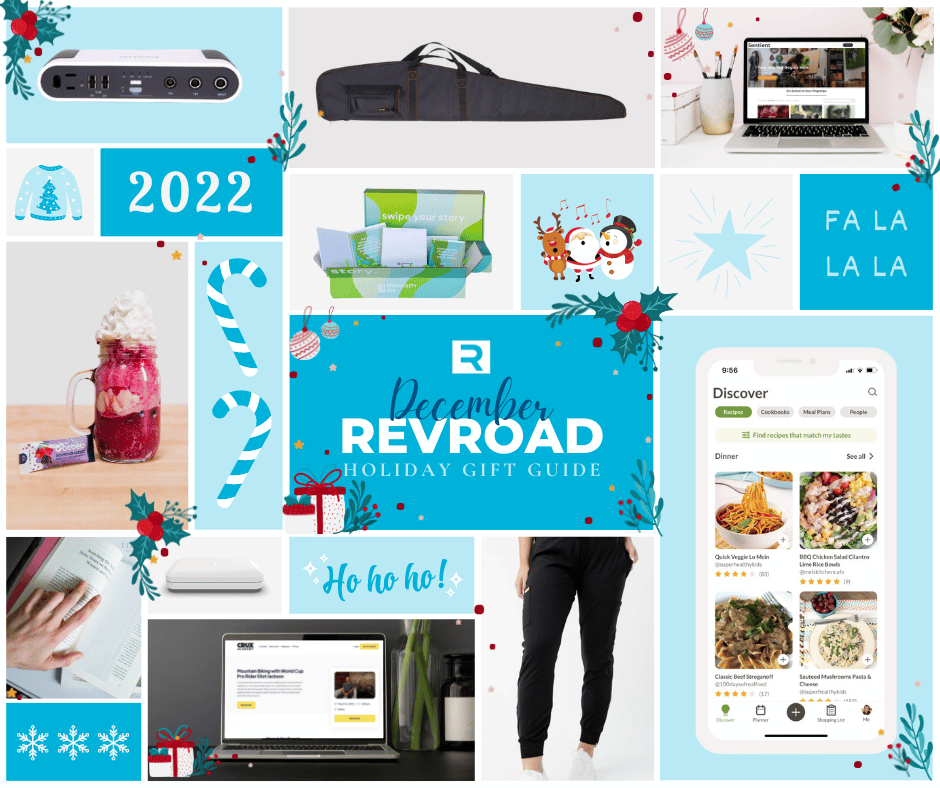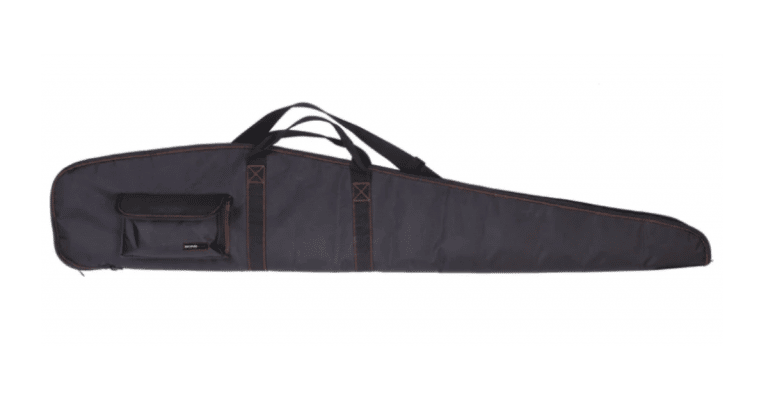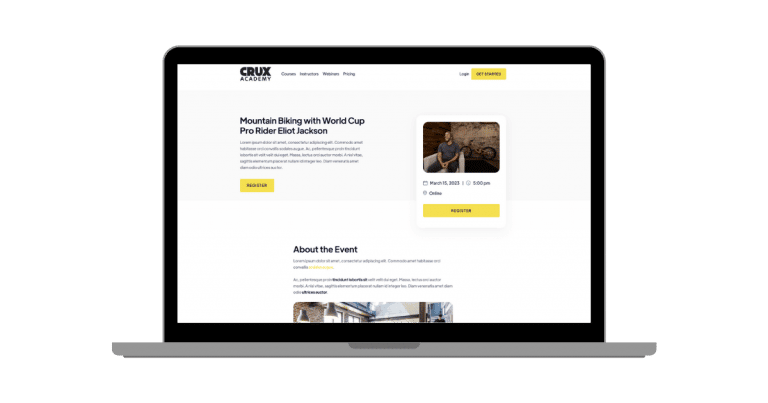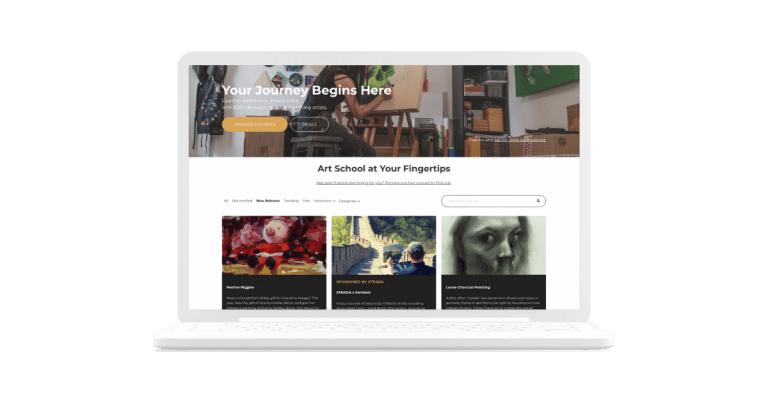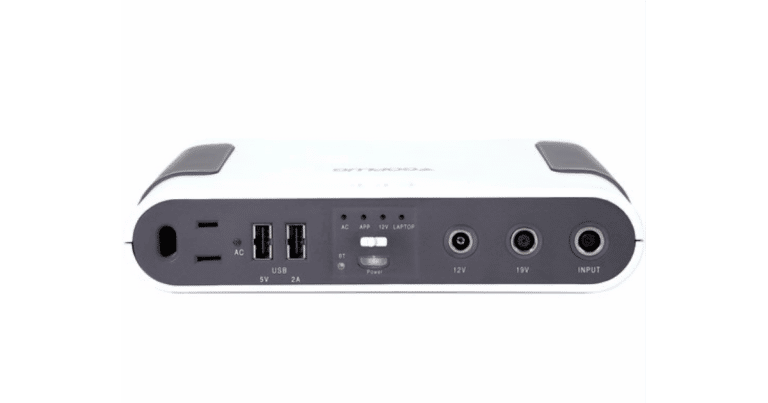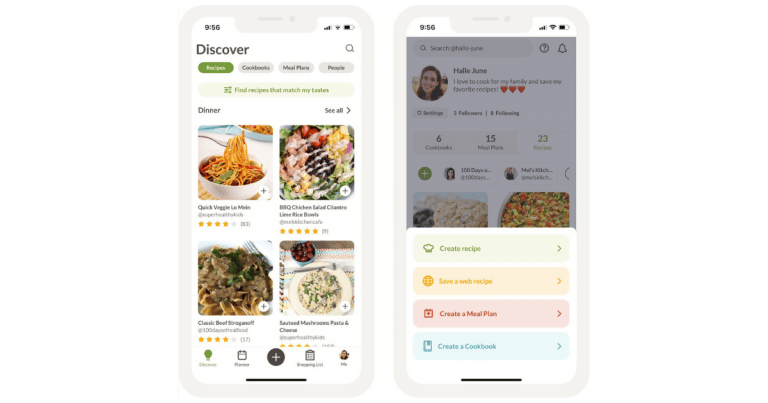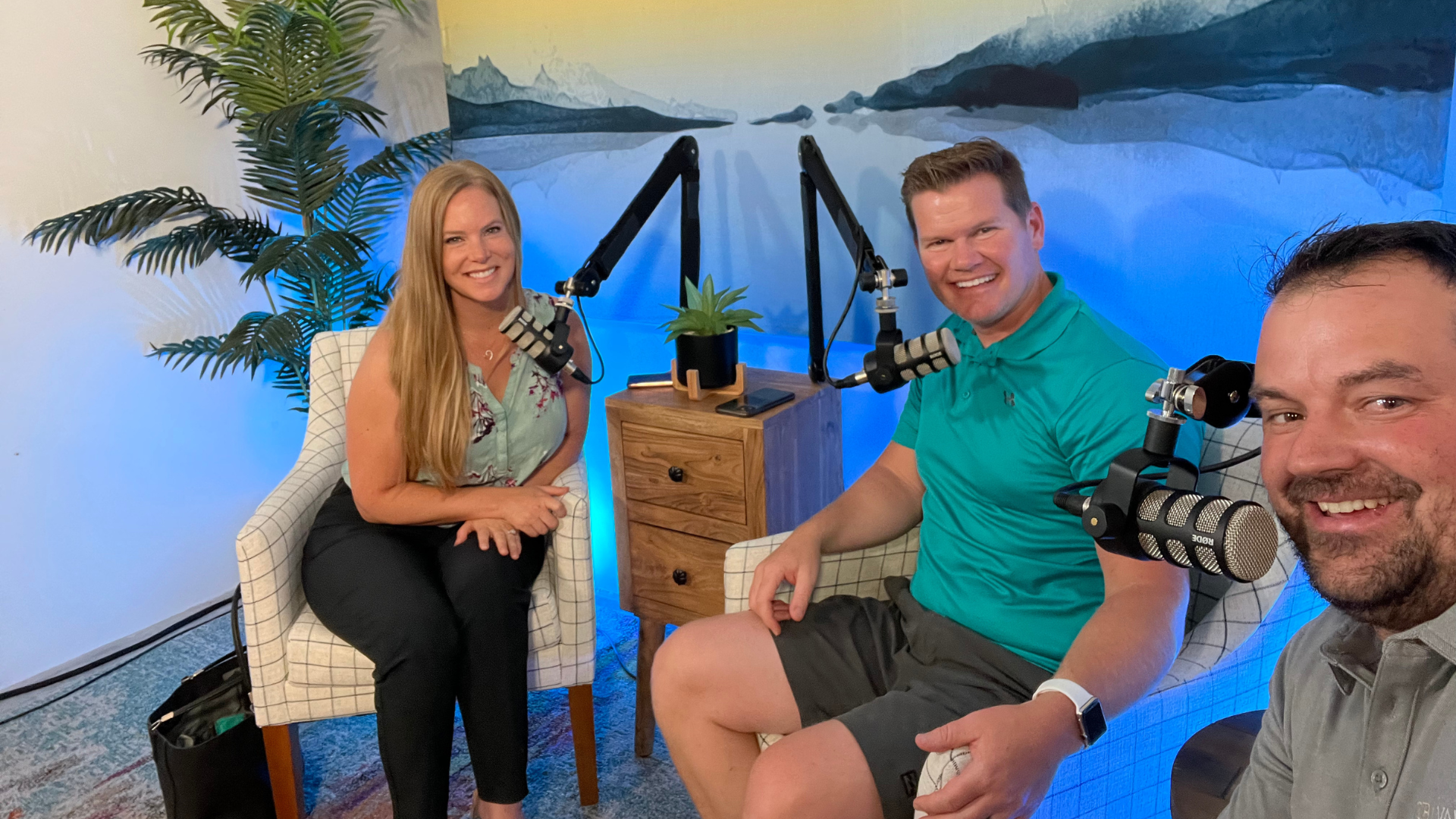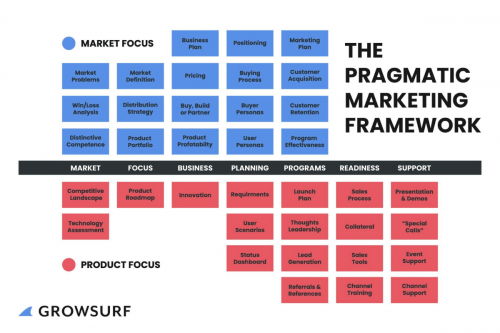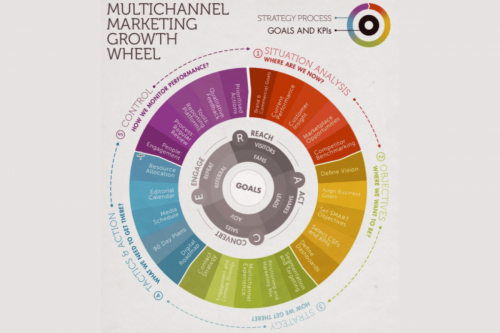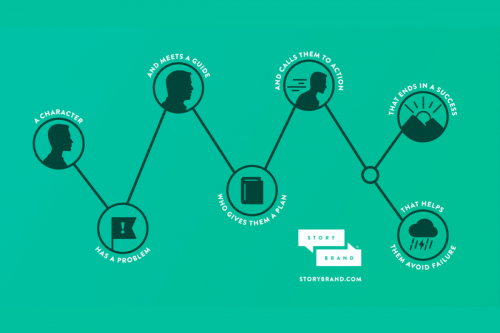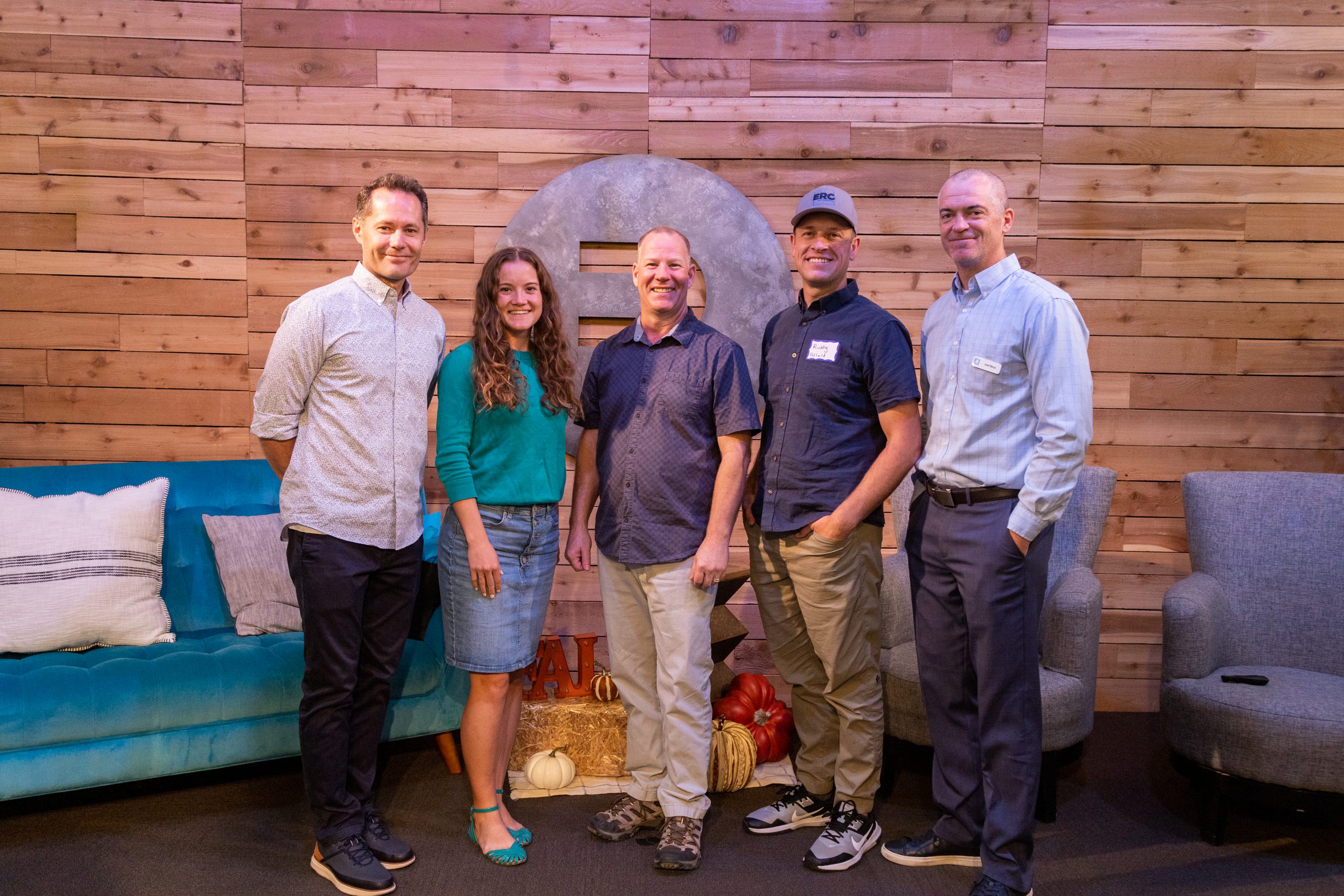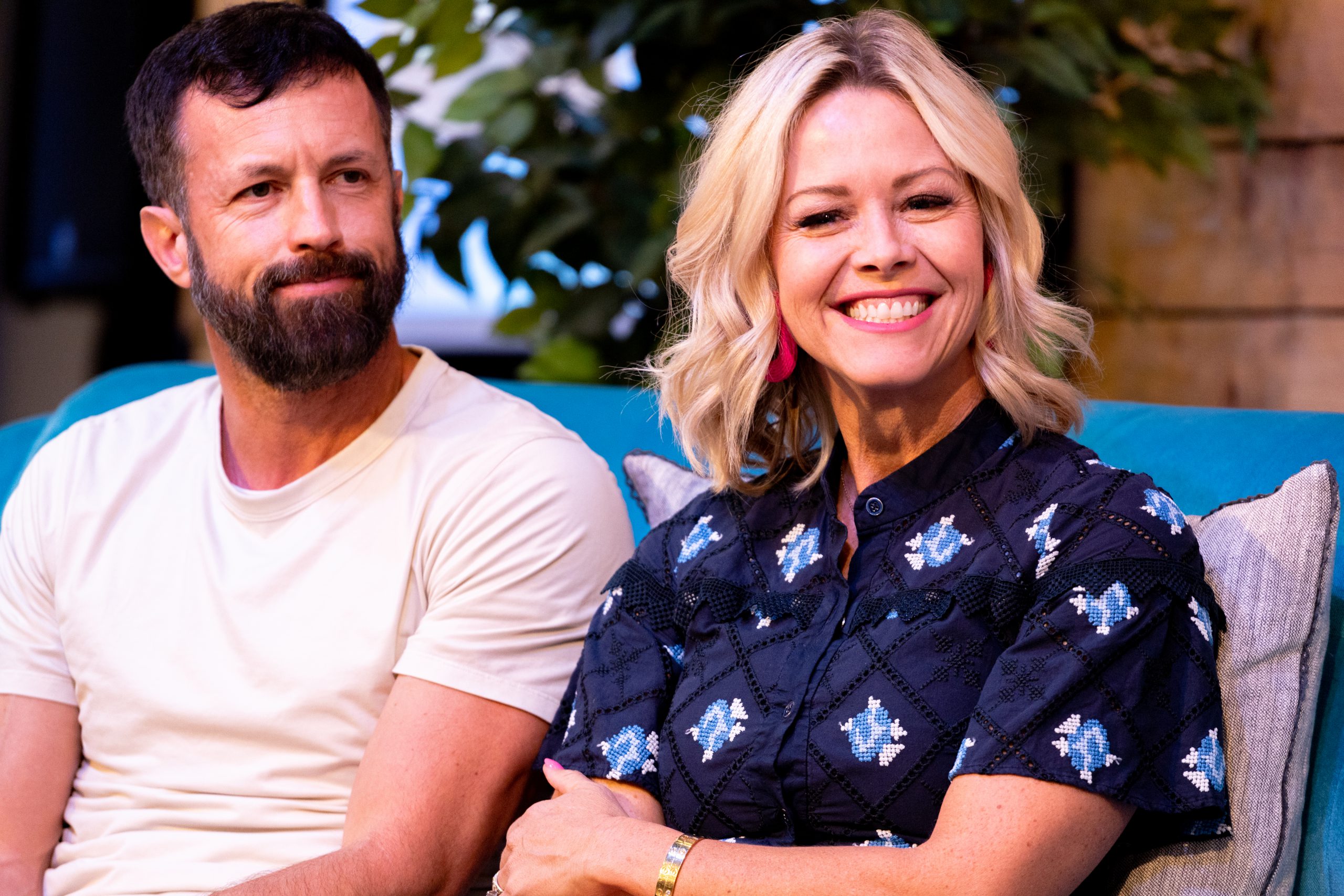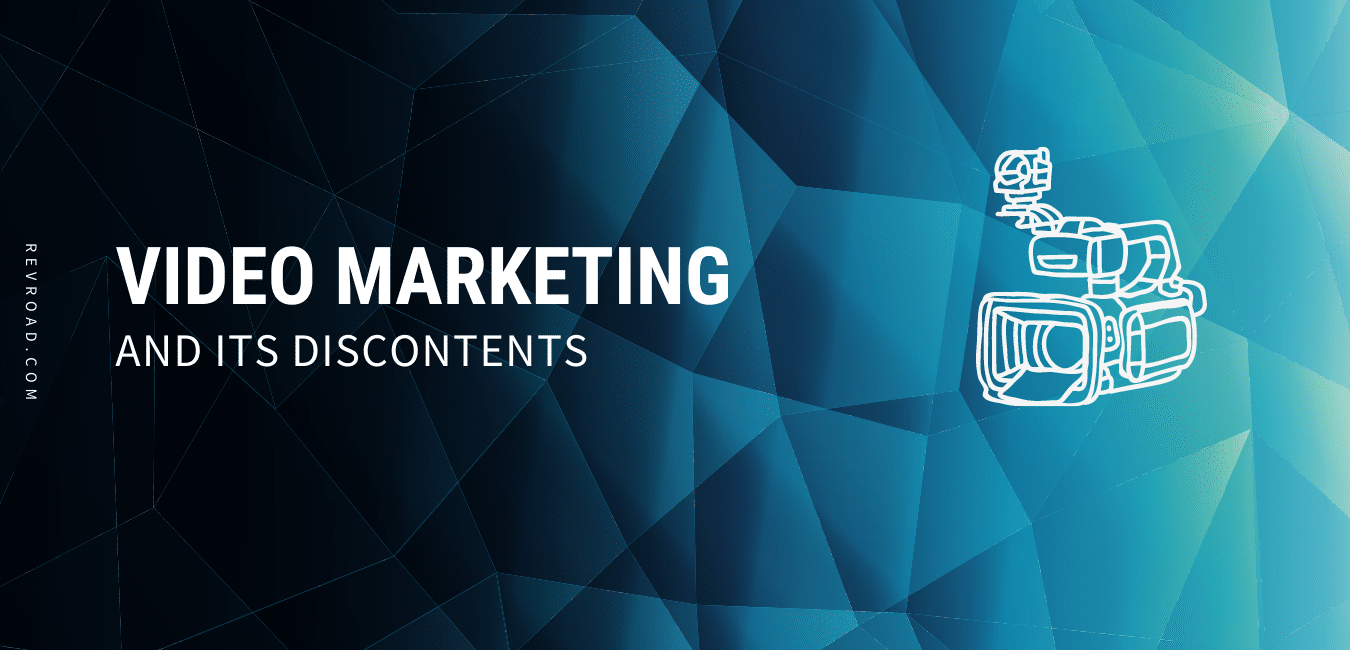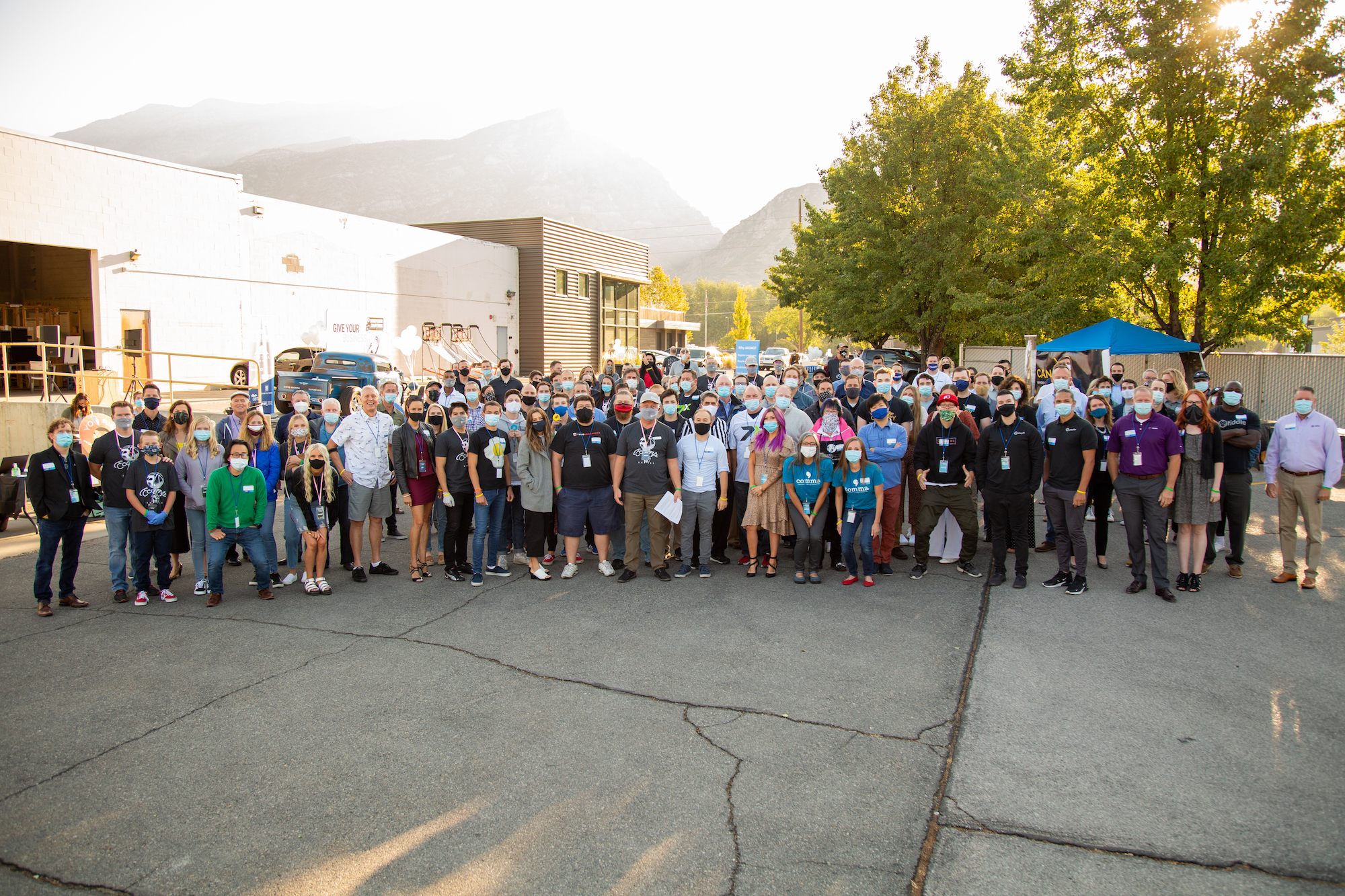The Journey of Building a Podcast
Evolution of the Marketing Process at RevRoad
Team Building Workshops for Employees with Adaptive Workshops
On October 6, 2022 Brent Allgood claimed the seat on RevRoad’s blue couch at RevUniversity. Brent is the CEO and Founder of Adaptive Workshops, a local startup that uses virtual reality (VR) to facilitate team building workshops for employees seeking to strengthen communication and engagement.
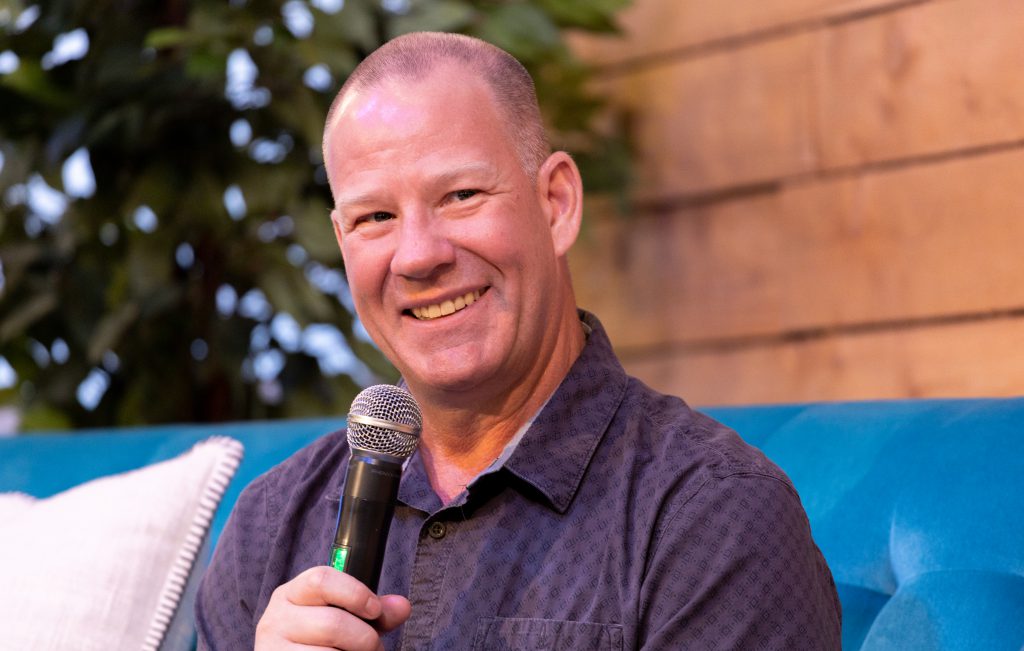
BUILDING EMPLOYEE ENGAGEMENT
According to Brent, there are mountains of research regarding employee engagement. Data shows that about one-third of employees are actively engaged in the office, and approximately 51% of employees are disengaged.
“They are simply there to exchange time for a paycheck. If something happens, their response is usually, “That’s not my problem.”
At Adaptive Workshops, Brent and his team seek to foster more engagement in employees to be more actively involved—not only in their work tasks but also in the company culture.
“The whole point of having employees and a team in business is so you don’t have to do it alone. We are social creatures. People want to be with their friends and do things with their friends. They want to be in an office space where they have great company culture.”
Brent Allgood, Adaptive Workshops
What do you actually do to build that culture?

HOW VR WORKSHOPS BUILD TEAM CULTURE
Within the Adaptive Workshop’s VR team building workshop for employees, teams work together to protect their fortress from ogre and dragon intruders. Standing at their post, each team member aims their bow and arrow at the approaching enemies.
Brent chose to use VR as the medium for his workshop for two primary reasons. The first reason, he explained, is that people want to learn by doing—not by being told what to do.
Consider it this way. How did you learn to swim? Do you go to a classroom where a teacher showed you how to move your arms and legs, and then you knew how to swim? No. You got into the pool, experienced the water, and move your body around to learn what it feels like to swim.
People don’t want to learn by someone telling them what to do. We learn by doing. And that is why VR is an ideal medium for team communication workshops.
“We use VR similar to how I would teach you to swim, but instead we are teaching about communication. Rather than me coming into your workspace and saying, “You need to communicate with your team,” I’m going to put you in a VR experience. You naturally want to perform well in the game, and you can’t do well unless you are communicating. That is why we use VR as a tool to get teams to come together, communicate, understand who is good at what and then further develop those roles.”
Brent Allgood, Adaptive Workshops
The second reason is because it is fun! VR provides an environment for teams to come together, let their hair down, and have some fun together—within a structured workshop to help them bond. You are bonding in the foxholes so that when you come together in the office the next day, you’re ready to work together.
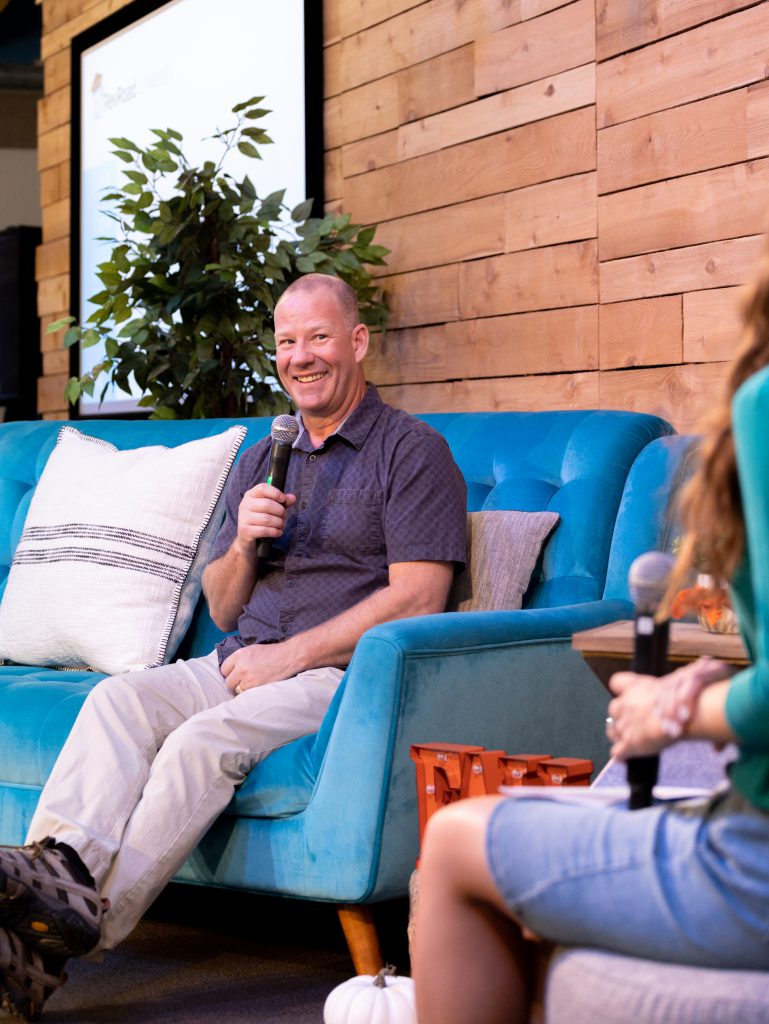
WHO THE WORKSHOP IS FOR
This team building workshop for employees is ideal for teams and companies who are changing rapidly.
It often takes companies months of even years to fully integrate a new employee into the team. By doing the Adaptive Workshops exercise, new employees can be integrated within half a day. The workshop can build that comradery very quickly but unveiling communication needs, identifying individual strengths, and developing friendships within a game environment.
If team members are unwilling to say, “I need help,” or, “What can I do for you?” during the workshop, they can take those communications skills back to the workplace to increase teamwork dynamics.
ADVICE TO ENTREPRENEURS
Brent shared his five pieces of advice to other entrepreneurs.
- Figure out exactly what is you want to do, but don’t be afraid to make changes
- When life happens, don’t quit.
- If you need to shift, you shift.
- Hire people that are smarter than you.
- Do what is right for the client no matter what.
To learn more from Brent Allgood and Adaptive Workshops, watch his RevUniversity interview. For more information on the services we offer at RevRoad, visit our website.
RevUniversity: Building Culture with Jeremy and Kristin Andrus of Traeger Grills
Jeremy and Kristin Andrus took the stage at RevUniversity on September 1, 2022. As husband and wife, business partners, and parents, they shared their experiences building culture in business and at home. Jeremy is the President and CEO of Traeger Grills and Kristin is a fierce advocate for ending Period Poverty through her #SisterGoods campaign.
This couple divides and conquers together while turning challenges into growth. They are impacting their business and communities while raising 6 children. Read on to learn more about how they create balance in their crazy, busy lives.
Culture
Jeremy and Kristin believe that culture is the backbone of any thriving business. Jeremy said, “People won’t give more than their job unless they buy into the culture of the business.” The five cultural values at the heart of Traeger’s culture are:
- Done done done. Believe in delivering quality to a customer.
- Test kitchen mentality. The best organizations build a team of people who believe in getting better.
- No reservations. We thoughtfully respect a customer in all of our touch points.
- Stand in the fire. Good companies are born from risk-taking. Be willing to take smart risks.
- Cook together. We want low-ego teams and people who are easy to work with. Rather than dictators for leaders, we want “servant leaders” that will help instead of just control. We want a team of people to show up and elevate others.
Part of creating the wanted culture in a business is hiring. In the beginning of Traeger, Jeremy said he interviewed, “99% of the first 400 people we hired.”
“I view a CEO’s role first and foremost as filtering and protecting culture.”
Jeremy Andrus, Traeger Grills
He demonstrated a long-term focus as he filtered people based on culture and values in order to build a culture that would allow Traeger to succeed in the business environment.
Philanthropy and fighting for a cause
Kristin actively fights for the rights of women in her community and around the world. Kristin is a board member for UnDEfeated, an organization that serves underprivileged youth and single mothers in Uganda. She is also an Instagram influencer and uses her platform to raise money for menstrual care products for women and girls all throughout Utah.
“When women use their voices and their resources and their talents and their energy— then we are the change.”
Kristin Andrus, Community Champion
Kristen highlighted the communities that Traeger supports such as Roots High School in West Valley City, Utah, and various other food advocacy groups throughout the state. Traeger believes that food brings people together to make meaningful connections—so what better way to get involved than to help diminish food poverty?
Kristin reminded all in attendance that you do not need to have money in order to make a difference. You can give your time and talents to help lift others around you—whether in a formal setting or simply serving in your own neighborhood.
Work-life balance
Jeremy and Kristin both talked about work-life balance and the importance of spending enough time in each of the areas. Jeremy explained that he has a time that he leaves the office and is done with work every single day. He said that it “forces me to prioritize my day.”Kristin acknowledges that many women experience internal conflict knowing that they cannot be at home with their children and serving in the community at the same time. There is always a trade-off. She has learned that everyone needs to “create their balance,” and to remember that both things are fulfilling and worthwhile.
We are so grateful for Jeremy and Kristin and their willingness to share their ideas and experiences as business owners and philanthropists making a difference in the lives of countless individuals!
Video interview link: Jeremy & Kristin Andrus | RevU Featured Founders
End of Blog Post
Diversifying Your Investment Portfolio: Best Tips for 2022
Networking: Building your business connections
By: Landon Mitchell
What is networking?
Networking is the exchange of information and ideas among people with a common profession or interest, usually in an informal social setting, and it is essential in business. Learning to find, engage, and close investors are tools every entrepreneur needs. These skills are useful for more than just finding investors. They’re a primary driver of getting sales, referrals, and other means of packing your pipeline with good leads! They are also used to find job applicants and in market research to get you in front of difficult-to-reach people that could help you learn and understand a specific field, as well as important policy and decision-makers.
When you start networking, you (obviously) have to make connections to get to where you want to be. So you go to networking events, call personal assistants, get on people’s calendars, meet them, and become friends to build that network and relationship. Though, the problem is that these people don’t have time or, honestly, a reason to care about you. The assistants in charge of their calendars act as gatekeepers. These people don’t need friends. So, instead of trying to navigate straightway to your end goal, you start with people you already know and trust to build your network. You have those people you know introduce you to people they know that might be closer to your end goal, and so forth. Pretty quickly, you’ll reach your goal.
How should I network?
The best place to start is with the people closest to you! And it’s your job to make it as easy as possible for them to help you. I want you to try a mental exercise in your head. Make a list of each of these different things:
- What’s a good restaurant in your state?
- What’s a good restaurant around you?
- What’s a good Mexican restaurant where you live?
- What’s a fast-casual restaurant appropriate for business lunches within a five-minute drive of your place of work?
With every question, your choices were more and more constrained, and because of this, they likely generated more and more options in your mind. The same applies when making business connections. When you say, “I’m looking to talk to anybody,” chances are you’re not going to because people don’t know everyone; they know someone. And until you can help people recognize the someone you’re trying to get to, it becomes difficult for them to know who to refer you to. The more specific you make your goal, the better. For example, let’s say you’re looking for someone who does billing in a pediatric office for a hospital system. While not very many people would know someone that does billing in a pediatric office, they might be able to put you in contact with a doctor, which is still a significant step towards your goal.
Meeting people
When you’re just meeting someone off a referral, you want to go from knowing nothing about each other to getting time from them. Here’s an outline you can use when meeting someone for the first time:
- You don’t know me, but our mutual associate [name] recommended you highly.
- I am trying to [specific goal], and [name] said you are the best person they know for this.
- Is there a time I can sit down with you for fifteen minutes to discuss this? (preferably in person)
Remember this: you never want to throw a sales pitch or anything like it. You want to try to build a relationship with them. You want to make sure they know you’re genuinely interested in them and that you aren’t just using them as a tool to get to where you want to be. People don’t care how much you know until they know how much you care. The more effort you put into a relationship with a person, the likelihood they help you increases. If you ever wonder if you’re being overbearing, just ask them! You want to show them that you’re respectful of their time.
And here’s an outline for that 15-minute meeting:
- I appreciate this so much. You came so highly recommended by [name]. How do you know them?
- [Review ultimate goal] What experience have you had with this?
- Who would you want to talk to if you were in my position? [get three people, ask for an introduction]
- Do you think anyone would be interested in [ultimate goal]? How would you recommend I proceed? [solicit follow-up]
Once again, the more effort you put into the relationship you’re trying to create, the more likely they are to help. It’s always a good idea to ask for advice when in contact with someone that is in a position to help you! Remember this: If you ask for money, you’re more likely to get advice, and if you ask for advice, you’re more likely to get money.
And there you have it! Connections are valuable and imperative to business, and this process helps shorten the path you take towards creating them. To learn more about networking, you can watch the full workshop.
Video Marketing and Its Discontents
About WordPress
RevRoad
6767 Comments in moderation
New
View Post
Insights10
Howdy, Bri RayBri Ray
Log Out
Edit Post
Edit with Elementor
Save draft
Preview
Publish
63/100
Add title
Video Marketing and Its Discontents
Did you know YouTube was the most visited website in 2020? Or that Google’s algorithm favors websites with video? Reality check—you need video marketing. While traditional video can be expensive, the good news is there are ways to make great video content on a budget by hiring a freelance videographer.
Savology Reports on the State of Personal Finance for 2020
News provided by Savology
OREM, Utah — Savology, a digital financial wellness platform helping American households improve their financial outcomes by providing accessible financial planning, publishes a comprehensive state of household personal finances report.
Savology examined anonymized data from approximately 40,000 financial plans created across all 50 states and Washington D.C. in 2020 to create a holistic report that covers all personal finance areas including savings, income, debt, spending, insurance, estate planning, risk management, and retirement outlook.
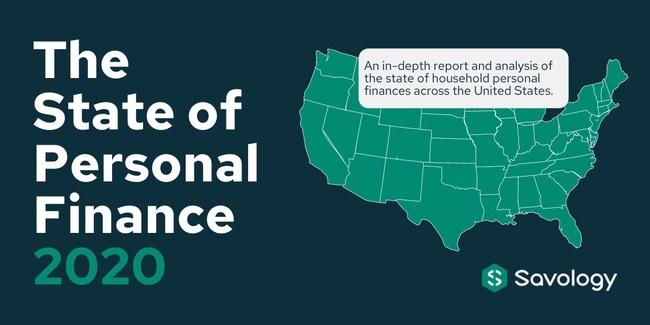
“Our goal was to measure and understand the complete spectrum of personal finances”, says Savology founder and CEO, Spencer Barclay. “The information in this report can help us identify the gaps and needs of American households so that we [and others] can more effectively address the problems at hand.”
While the average reported savings rates were higher than anticipated at 13.8%, retirement still remains out of reach for the majority of households with 72% not on track to meet their retirement goals. This means that only 1 in every 4 households (28%) are on track to reach their goals.
Additional key findings, among many others, include the following:
- While households are saving a noticeably higher amount than previous years, the average savings rate deficit is still 9.1%.
- Only 36.7% of households have all of the recommended types of insurance needed to mitigate risk based on their specific familial needs.
- Households with dependents are not adequately covered by life insurance. Nearly 50% do not have any, and many of those that do have a significant gap.
- Estate planning is one area of financial planning that seems to be significantly neglected, with only 23% having at least a basic will and 2.4% having a complete estate plan.
- The average retirement shortfall is more than 10 years, meaning that Americans will either have to delay retirement or adjust their target lifestyle and retirement goals.
While these numbers do show cause for concern, Savology believes through accessible and effective financial planning, households will be able to better understand financial situations and make meaningful improvements.
“As someone who has repeatedly witnessed the impact of not having access to proper financial planning and overall literacy, I can say with confidence that we’re helping households improve their overall well-being and quality of life,” says Savology’s Director of Marketing, Kristian Borghesan. “Having now seen the numbers and the data, we know all too well that we have our work cut out for us to better the financial lives of millions.”
For more information about the report and to view the major findings across all financial areas visit The State of Personal Finance 2020.
For media inquiries, please contact Bri Ray, Communications Specialist, at 801-472-2124 or 288514@email4pr.com.
About Savology:
Savology is a venture-backed startup that is on a mission to improve the financial well-being of millions of American households by making financial planning more accessible, actionable, and effective than ever before. In just 5 minutes, users can build a personalized financial plan, holistic report card, and personalized action items. In addition to their consumer-facing product, Savology works closely with employers to offer employees financial planning and wellness benefits. Savology, based in the Silicon Slopes of Utah, was founded by serial entrepreneur Spencer Barclay in early 2019.
RevRoad Annual Entrepreneur Competition a Success.
Over $14,500 given in cash prize money to winning entrepreneurs at the RevRoad Entrepreneur Competition, sponsored by Central Bank.
Continue reading